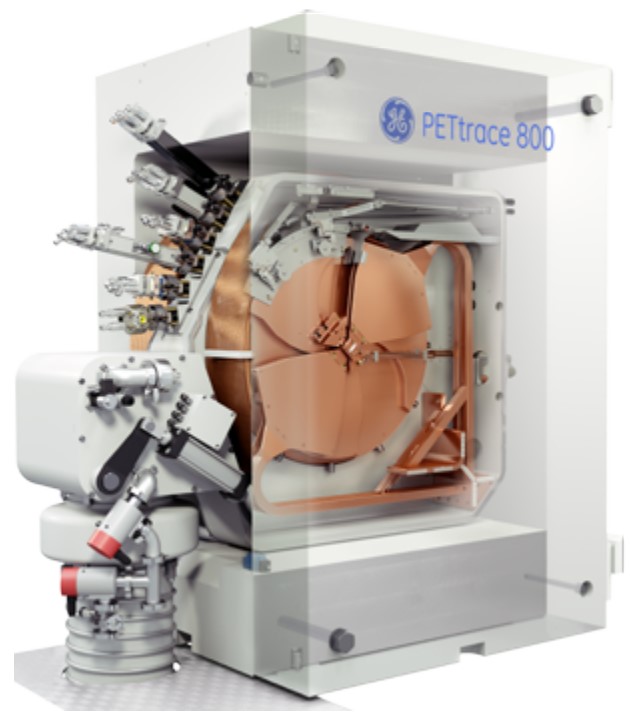Cyclotron Tuning
Experimental Apparatus
McMaster University Cyclotron Facility is home to a GE PETtrace cyclotron. An image of the cyclotron is shown in Figure 2. It accelerates protons up to 16.5 million electron volts and is also capable of accelerating deuterons up to 8.4 million electron volts. It is mainly used to create radioisotopes for development of novel radiopharmaceuticals within labs on campus.
Protons are generated by high-voltage, low-pressure plasma discharge, much like the plasma experiment in PHYSICS 3P03 except with hydrogen gas. ![]() ions are ejected from the plasma and aimed toward a carbon stripper foil that takes the electrons and results in
ions are ejected from the plasma and aimed toward a carbon stripper foil that takes the electrons and results in ![]() ions, i.e. protons.
ions, i.e. protons.
The instrument that generates the electric field are basically a high-precision oscillator and radiofrequency amplifier. The result is a high-precision oscillating electric field with a magnitude of 35 kV.
The magnetic field is provided by one massive power supply (smaller power supplies connected in series is another common solution) generating up to 450 amps to a pair of coils. The coils are made of hollow copper tubing so that they can be water-cooled while carrying so much current. The result is a very strong, very uniform magnetic field in the area between the coils. Note that the target where the radioisotopes are generated is OUTSIDE the coils.
Figure 2: An image of the PETtrace 800. The magnets are removed from the image so that you can see the inner workings.
The current from the proton beam can be measured at various positions along its trajectory. In this experiment, you are going to focus on the target (where the radioisotopes are created) and the foil (just before the target, inside the space between the coils).
